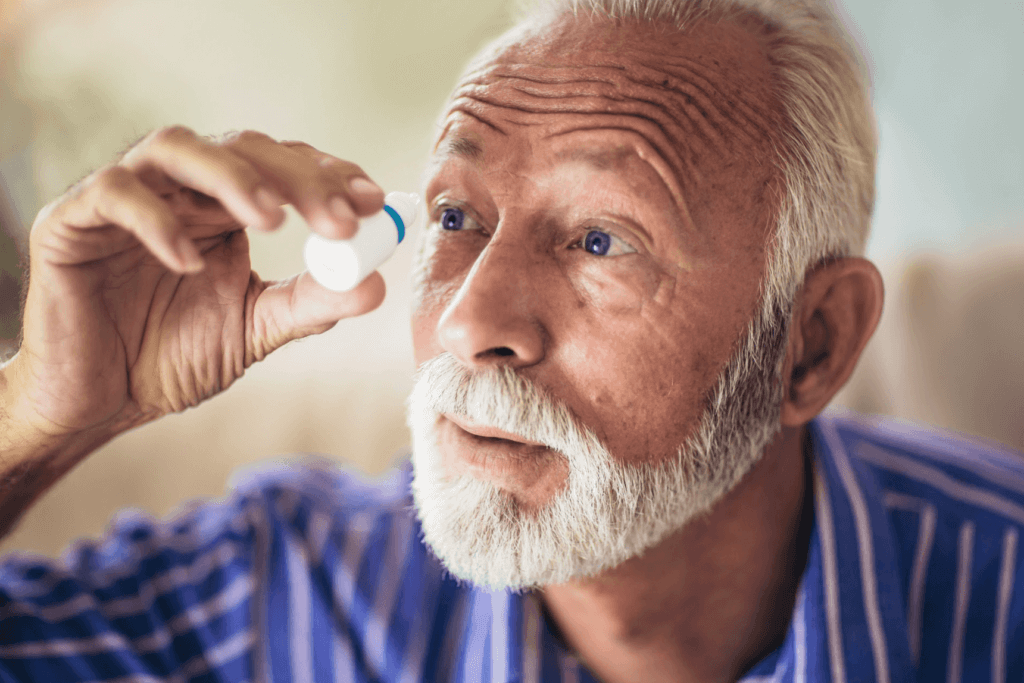Clewner & Kelly Eye Center, Dry Eye Syndrome, Eye Exams, Our Team

Dry eye syndrome is a common, often frustrating condition that can affect a person’s quality of life, causing everything from mild discomfort to serious vision issues. At Clewner & Kelly Eye Center, we offer personalized solutions to help our patients find lasting relief. Understanding what causes dry eyes, recognizing symptoms early, and knowing the latest treatments available can help you protect your eye health.
Read on to learn more about the causes, symptoms, treatment options, and preventive measures for managing dry eye syndrome. If you find yourself with symptoms of this condition, contact our Boca Raton, FL facility to schedule an eye exam.
What causes dry eyes?
Dry eye syndrome can result from a range of factors, including environmental conditions, lifestyle choices, and certain medical conditions. Here are some common causes:
- Reduced tear production: As we age, tear production naturally declines, often leading to dry eye symptoms, especially in adults over 50.
- Environmental factors: Wind, dry air, or exposure to screens for extended periods can reduce tear film, increasing eye dryness.
- Medical conditions and medications: Certain autoimmune diseases, such as Sjögren’s syndrome, and medications like antihistamines or antidepressants can impact tear production.
- Hormonal changes: Women experiencing hormonal shifts due to pregnancy, birth control, or menopause are often more susceptible to dry eye syndrome.
Knowing what causes dry eyes can help you take steps to minimize exposure to these factors and potentially reduce or prevent symptoms.
What are the symptoms of dry eyes?
Recognizing the symptoms of dry eyes is the first step in seeking relief. While dry eye symptoms vary in severity, they commonly include:
- Stinging, burning, or scratchy sensation
- Redness and irritation
- Sensitivity to light
- Blurry vision and eye fatigue
- Excessive tearing
These symptoms can range from mild discomfort to severe pain and vision disruption, so addressing them early is essential.
Can you prevent dry eyes?
While some factors, like aging or hormonal changes, can’t be prevented, there are steps you can take to reduce your risk of developing dry eye syndrome:
- Take regular screen breaks: Use the 20-20-20 rule — every 20 minutes, look at something 20 feet away for at least 20 seconds — to help prevent eye strain.
- Use a humidifier: Dry indoor air can worsen dry eye symptoms, especially in cooler months.
- Wear sunglasses outdoors: Sunglasses help protect your eyes from wind and sunlight, both of which can exacerbate dryness.
- Stay hydrated and eat a balanced diet: Drinking plenty of water and consuming omega-3-rich foods, like salmon and walnuts, may support eye health.
- Avoid smoke and pollution: Both can irritate the eyes, so try to minimize exposure as much as possible.
By adopting these habits, you can significantly reduce your risk of dry eyes and help keep your eyes comfortable throughout the day.
What treatments are available for dry eye syndrome?
We offer a variety of effective dry eye treatments to help relieve dry eye syndrome, including artificial tears and lubricating drops, prescription eye drops, Lipiflow®, and more. With a tailored treatment plan, you can effectively manage dry eye syndrome and improve daily comfort.
Find dry eye relief in Boca Raton, FL
If you’re experiencing symptoms of dry eye syndrome, our team at Clewner & Kelly Eye Center is here to help. With advanced treatments and a patient-centered approach, we can work with you to develop a personalized plan for effective relief. Contact us in Boca Raton, FL to schedule an appointment and take the first step toward healthier, more comfortable eyes.